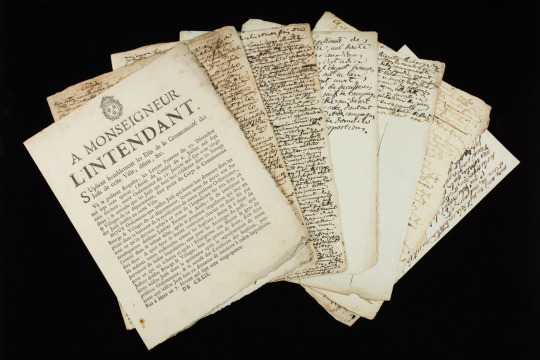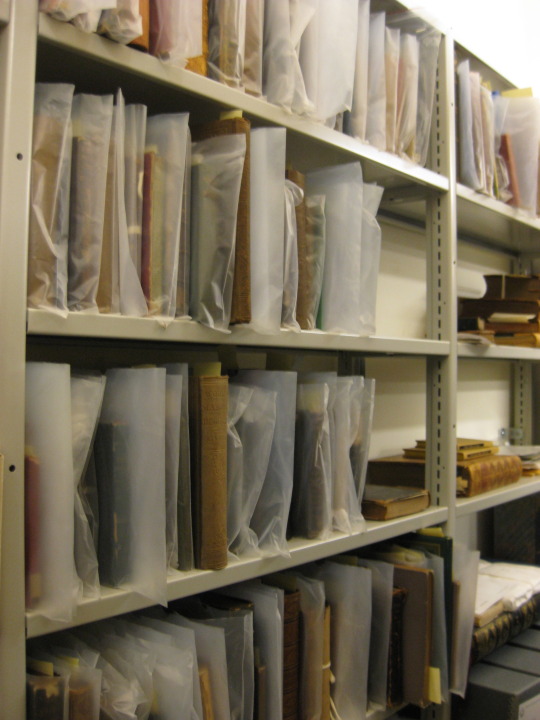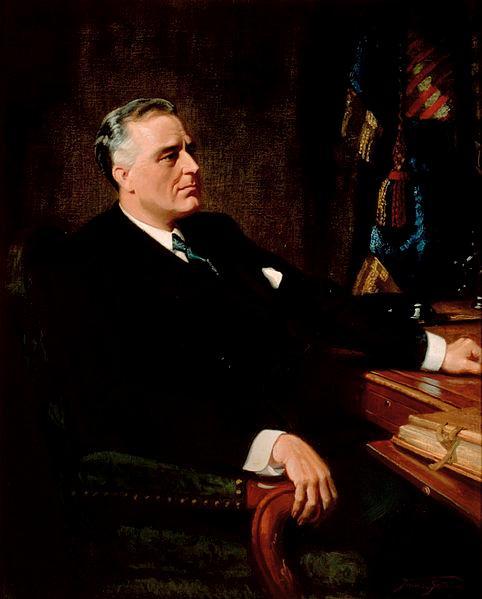By Dong Eun Kim, Head Conservator, Center for Jewish History
Michael Simonson, Archivist and Registrar, Leo Baeck Institute
Post 3
In the previous blog post, the Werner J. and Gisella Levi
Cahnman Conservation Laboratory had received the Leo Baeck
Institute’s Metz Jewish Community Collection for assessment and treatment. The
Conservators in the lab were captivated by these artifacts; we felt there was
something truly important about them, yet none of us could identify what it was
that made them feel so special.
We’d investigated the ink and the
paper, and identified interesting and informative aspects of each, but were still
confounded by the appeal of these artifacts.
At this point, we had a clear
understanding of the elements necessary to proper preservation strategy, and
were able to make recommendations for treatment. From a conservator’s
perspective, we knew all we needed to know. But still these documents and
scraps pulled at me – I found myself thinking about them at home, in the train,
wondering why I was attracted to them.
The documentation we received
with the collection describes one of the folders as containing an edict
regarding taxation of the Jewish community of Metz, and the manuscript “Rapport
relativement à une contestation entre les juifs de Metz et les juifs de la campagne” (circa 1791; French; manuscript; 11 pages + 2
unnumbered pages) regarding the Brancas tax, enacted 1715 as a tribute tax on
the Jewish community for the duke of Brancas.”

“Rapport relativement à une
contestation entre les juifs de Metz et les juifs de la campagne” (circa
1791; French; manuscript; 11 pages +2 unnumbered pages) Metz Jewish Community
Collection, 1700-1799. Leo
Baeck Institute Archives.Photo credit:
Shayna Marchese
Just a bunch of tax
documents, right? Maybe not…
A multilingual friend roughly
translated the title of the 1791 manuscript to a “report
relating to a dispute between the Jews from Metz and the Jews from the
countryside.”
Hmm. That sounds more interesting than tax
documents.
“I may not be an historian,” I thought, “but I know
how to work the internet,” and I began to read about the city of Metz, and it
was fascinating. Much of the following information was gathered from jewishencyclopedia.com
and jewishvirtuallibrary.org.
Currently situated in France near the northeast
border, Metz has proximity to Belgium, Luxemburg, and Germany. Jews originally
settled in Metz, a German fortified city in Lorraine, in the year 221, and
lived relatively peacefully alongside Christians all the way to the 11th
century, when the Crusades scattered the Jewish population.
Those returning during the 13th and 14th
centuries found refuge, but had taxes levied upon them for protection. They
were again expelled in 1365 after being assigned the blame for a disastrous
fire caused by lightning, and remained at large until France took possession of
Metz in 1567, when the Marshal of Vieilleville admitted a number of Jewish
families. By the turn of the 17th century the French had recognized
the elected officials of the Jewish Community as intermediaries to the city
government.
The Jewish Community of Metz grew steadily under
French rule, and by the end of the 18th century were considered
citizens of France. But the period was not uneventful for the Jews, having
survived multiple changes of French rule, including taking a supportive
patriotic role in the revolution, in defense of the city. We find evidence of
alternating persecution and acceptance throughout the entire history of Metz,
but the Jewish community there has persevered and often prospered for almost
two thousand years.
These documents, the manuscript, the scraps of
evidence, all provide illustration of a crucial moment in that history. The 18th
century was one of several periods of over-taxation that resulted in the
community fighting back and ultimately gaining citizenship and the official
acceptance of Judaism.
Having finally understood
what it was about this collection that felt so important, I asked Michael
Simonson, Archivist for the Leo Baecke Institute, to contribute his insight
into the importance of these materials. The following is Michael’s thoughtful analysis:
The Metz Jewish Community
Collection came to the Leo Baeck Institute in the decades immediately after the
Second World War. The Jews of Metz, and indeed of all of the
Alsace-Lorraine region, were expelled almost immediately after the Nazi
occupation in June 1940. Many of these people, now caught in central and
western France, were to undergo the restrictions, persecutions, and
deportations that took place under the occupation. Alsace-Lorraine had a
number of very old Jewish communities, and when the war ended some of the
community records were discovered, salvaged and deposited at the Leo Baeck
Institute.The records of the Jewish Community of Metz found at the Leo Baeck Institute
comprise receipts that track a history of payments forced upon the Jewish
Community of Metz. These date from the 18th
century. There is further a decree from 1724 regarding the taxation of
the Jews of Metz by the French authorities, and a manuscript from the same time
period about the Brancas Tax. Established in 1715, the Brancas Tax was a
regular fine on the Jews of Metz as payment to the Duke of Brancas, in exchange
for his “protection.” There were numerous other taxes on the Jewish
community throughout the 18th century as well. The debts of the
community became enormous, reaching 500,000 livres by the time of the French
Revolution. Following the French Revolution there were active attempts
to stop the heavy taxation, particularly the Brancas Tax, and many of these
were discontinued as the 19th century began. One item in the
collection is a manuscript, written probably around 1740, about the Brancas Tax
and its heavy financial toll on the Jewish community at the time. By
preserving these financial receipts of the Jewish community, we can see the
ways that anti-Semitism worked economically to oppress Jews and Jewish life in
the 18th century in Metz.
This has been a tremendously rewarding investigation,
ranging from the microscopic examination of a few grains of sand, to an
appreciation of an entire community’s plight under Nazi occupation, and beyond.
I hope you’ve enjoyed this ride as much as I have, thanks for taking it with
me.


